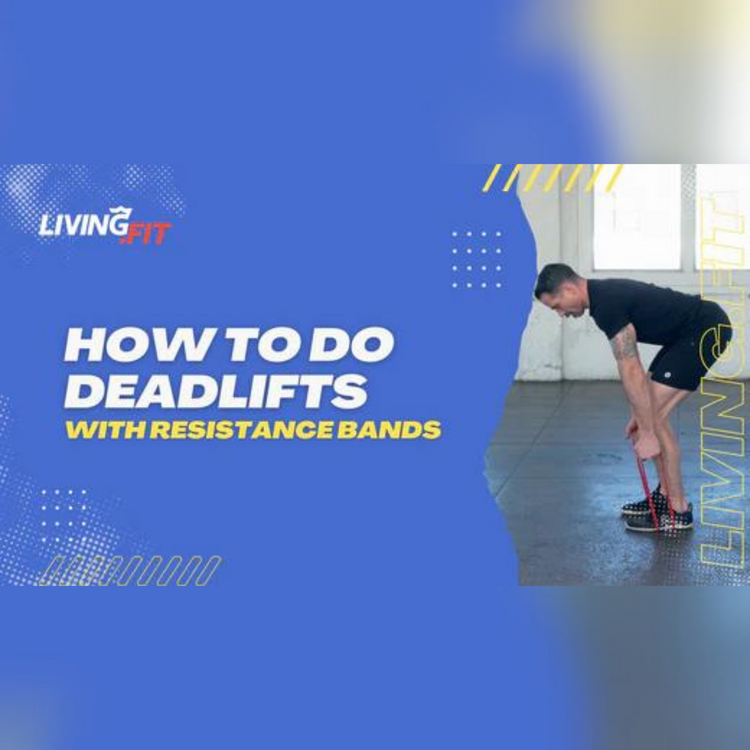How to Resistance Bands Deadlift | Movement Breakdown

Resistance band deadlifts are a variation of the traditional deadlift exercise. Resistance band deadlifts are a great way to teach the basics of deadlifts with minimal weight and can help create an emphasis on the form. They also work if you're at home or on the road and need to get some sort of deadlifting in. The exercise primarily targets the muscles in your lower body, including the glutes, hamstrings, quadriceps, and calves. It also engages your core muscles, lower back, and upper body to a lesser extent.
How to Perform Resistance Band Deadlifts
To perform resistance band deadlifts, you'll need a resistance band and maybe a stable anchor point. Here are the instructions:
- Start by stepping on the resistance band with your feet shoulder-width apart. Make sure the band is securely under your feet.
- Bend down and grab the handles or ends of the band with an overhand grip, just outside your legs.
- Keep your back straight, chest lifted, and shoulders pulled back. This is your starting position.
- Begin the movement by pushing through your heels, driving your hips forward, and standing up straight. As you rise, pull the resistance band up along your body, keeping it close to your legs.
- At the top of the movement, squeeze your glutes and maintain a tall posture for a brief moment.
- Slowly lower the band by bending at your hips and knees, keeping your back straight. Return to the starting position.
An alternative to deadlifts that targets similar muscle groups is the Romanian deadlift (RDL). RDLs focus more on the hamstrings and glutes, placing less emphasis on the quadriceps compared to conventional deadlifts.
To go heavy with resistance band deadlifts, you can use stronger and thicker resistance bands or double up on bands to increase the overall resistance. Additionally, you can combine resistance band deadlifts with other exercises like weighted squats or lunges to further challenge your muscles.
The Primary Benefits of Deadlifts
Increased strength and muscle mass:
Deadlifts are a compound exercise that engages multiple muscle groups, promoting overall strength and muscle development.
Improved posture and core stability:
Deadlifts strengthen your core, lower back, and posterior chain, which can enhance posture and stability.
Enhanced functional strength:
The deadlift movement pattern mimics real-life activities like lifting heavy objects from the ground, making it a functional exercise.
Increased bone density:
Deadlifts are a weight-bearing exercise that can help improve bone density and reduce the risk of osteoporosis.
Hormonal response:
Deadlifts, especially when performed with heavy weights, can stimulate the release of testosterone and growth hormone, which can support muscle growth and fat loss.
When performing deadlifts, it's important to maintain proper form and technique to prevent injuries. It's recommended to start with lighter weights or resistance bands and gradually increase the load as your strength and proficiency improve.
Helpful Resources:
- Be alerted when we publish more like this to our blog here
- Daily workout plans here
- Fitness Equipment like resistance bands, pull up bars, etc here
- Free resistance band workouts here
- Follow along with $1 video workouts here








